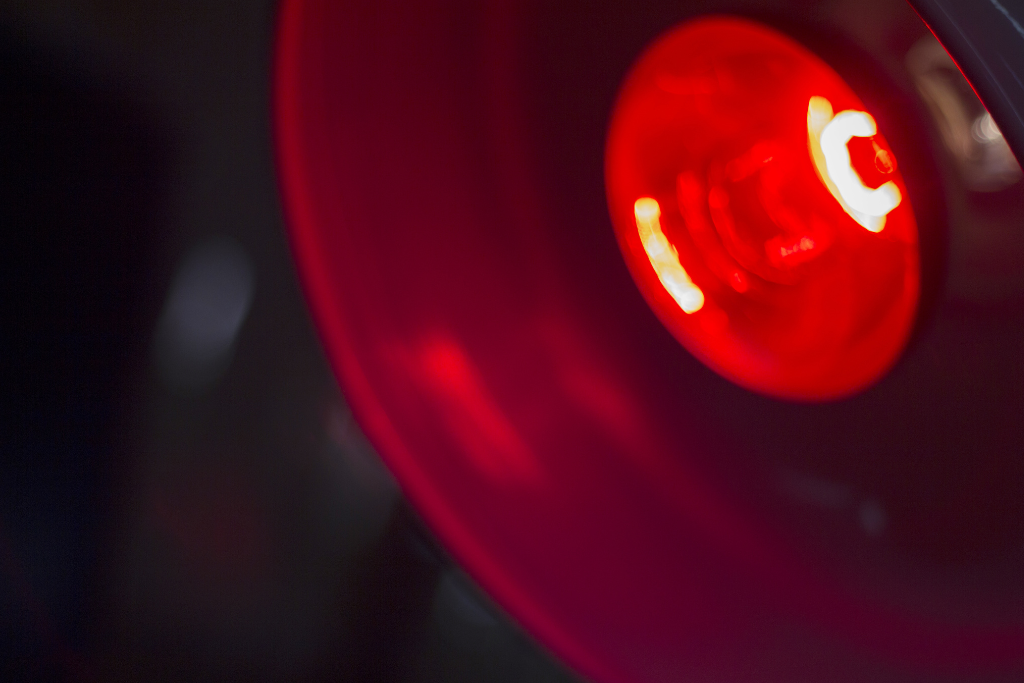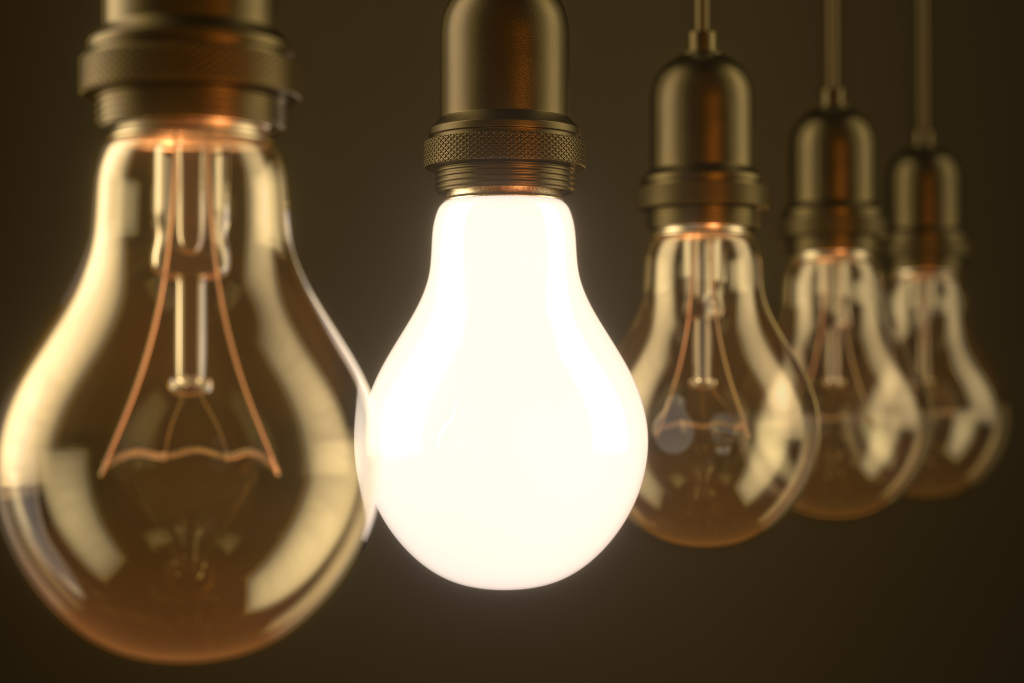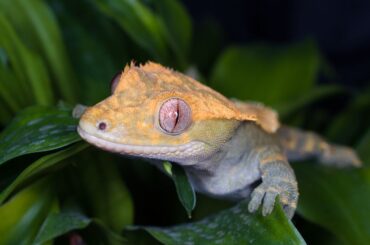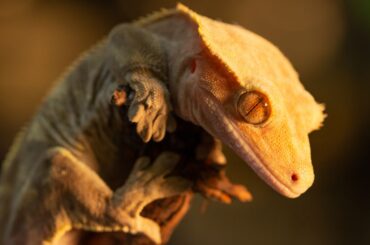Are you curious about how to care for your gecko and ensure it stays happy and healthy? One important aspect of gecko care is providing the right lighting for them. You may have heard different opinions about turning off your gecko’s heat lamp at night.
In this article, we will answer this question and clear up a common misconception about leopard geckos and the lighting in their tanks.
Nighttime Temperature and Light Considerations
If you’re using a ceramic heat lamp, it can stay on all night because it only produces heat and no light. This helps keep your gecko warm without disturbing its sleep. Geckos need a natural day-night cycle, and having darkness at night is important for their sleep.
To create the right nighttime temperatures for your gecko, aim for around 70°F to 75°F (21°C to 24°C) in their tank. You can achieve a lower temperature at night by turning off the incandescent daylight lamp or using a separate heat source, like a ceramic heat lamp, if needed.
Regularly check the temperature with a thermometer and adjust it to ensure your gecko is comfortable. Taking care of your gecko’s nighttime temperature and lighting is important for its well-being. Providing the right environment, you’re helping your gecko stay cozy and maintain a healthy sleep routine.
Leopard Geckos Lighting Needs

Geckos are most active during the times of dusk and dawn. But even though they prefer those times, they still need a balanced day and night cycle in their tank. Lighting plays an important role in their lives!
Leopard geckos, like their internal clocks, rely on light to regulate their circadian rhythms. It helps them stay healthy and happy.
It’s a myth that leopard geckos don’t need any lighting during the day. They benefit from having a light source in their tank to create a proper day-night cycle. But remember, they also need a period of darkness at night to rest and recharge. Providing them with the right balance of light and dark is important throughout the day and night.
Different Types of Heat Lamps
Now let’s learn about the different types of heat lamps you can use for your gecko.
Ceramic Heat Lamps
Ceramic heat lamps are special lamps that provide heat for your gecko without giving off any light. They are designed to keep your gecko’s tank warm and cozy. These lamps are helpful because they create a consistent source of heat, ensuring your gecko stays comfortable day and night.
If you live where the temperature can get quite chilly, especially at night, a ceramic heat lamp is a great choice. It helps maintain the right temperature in your gecko’s tank, ensuring they stay warm and happy. Ceramic heat lamps can be used all day and all night, providing a constant source of warmth for your gecko.
Incandescent Daylight Lamps
Incandescent daylight lamps are special lamps that provide both heat and light for your gecko’s tank. They work just like regular light bulbs but are designed to create a natural day-night cycle. These lamps help simulate the sunlight that geckos would experience in their natural habitats.
During the daytime, when it’s bright outside, these lamps can be turned on to provide light for your gecko. The light lets them know it’s daytime and keeps them active and alert. Geckos need a period of darkness to rest and sleep peacefully.
Full-Spectrum or Uvb Daylight Lamps
Full-spectrum, or UVB daylight lamps, are special lamps that provide a broader range of light, including ultraviolet B (UVB) rays. These lamps mimic the natural sunlight that geckos would receive in the wild. UVB rays are important for your gecko because they help them produce vitamin D3, essential for bone health.
These are beneficial for your gecko’s overall health and well-being. They should be used during the daytime to provide the necessary UVB rays that your gecko needs. It helps your gecko’s body absorb calcium properly, vital for strong bones and a healthy metabolism.
Following the manufacturer’s instructions and guidelines when using these lamps is important. They should be placed at the appropriate distance from your gecko’s tank to ensure they receive the right amount of UVB exposure. Always provide a shaded area in the tank so your gecko can choose to be in the light or shade they prefer.
Leopard Gecko Light Schedule and Cycle

It’s important to keep a balanced day-night cycle for your leopard gecko. Like us, they need a regular pattern of light and darkness to stay healthy and happy. In their natural habitat, leopard geckos experience changes in light throughout the year, with longer days in the summer and shorter days in the winter.
Mimicking this pattern in their tank is a good idea. During the summer, you can provide around 14 hours of light and 10 hours of darkness. In the winter, you can reduce the light to about 10 hours and increase the darkness to about 14 hours.
You can use automatic timers for your gecko’s lights to make things easier. It’s best to gradually change the light schedule over a few weeks when transitioning between seasons. This helps your gecko adjust more easily to the changing seasons, just like in the wild.
Natural Light and Its Limitations
You might be wondering if you can use natural window light as a lighting source for your gecko. One of the risks is overheating. Direct sunlight can make the temperature in your gecko’s tank too hot and uncomfortable for them. Keeping their tank at the right temperature is important to keep them happy and healthy.
Another challenge with relying solely on natural light is that you can’t control the intensity of the light. Inconsistency can disrupt your gecko’s day-night cycle and confuse its internal clock. Remember, geckos need a regular pattern of light and darkness to thrive.
That’s why it’s recommended to use a combination of artificial lighting along with natural light. That way, you can provide a consistent light source and adjust the intensity. Having more control over the lighting, you can create a stable and comfortable environment for your gecko.
Conclusion
Providing a balanced pattern of light and dark hours is crucial for your gecko’s health and well-being. Like us, geckos have internal clocks that rely on a regular day-night cycle.
Remember to choose the right type of heat lamp for your gecko’s needs, whether it’s a ceramic heat lamp or an incandescent daylight lamp. Set up appropriate temperatures for daytime and nighttime, ensuring your gecko stays warm and comfortable. And remember to use a timer or automatic system to maintain consistent lighting schedules.
FAQs
What Time Should I Turn off My Leopard Geckos Light?
You should turn off your leopard gecko’s light at night when it’s time for them to sleep, usually in the evening or when it gets dark outside.
Can Leopard Geckos Sleep in Complete Darkness?
Yes, leopard geckos can sleep in complete darkness. They need a period of darkness at night to rest and recharge, just like we do.
Do Leopard Geckos Need Light During the Day?
Yes, leopard geckos need light during the day. Light in their tank helps them know when it’s daytime and stay active.




